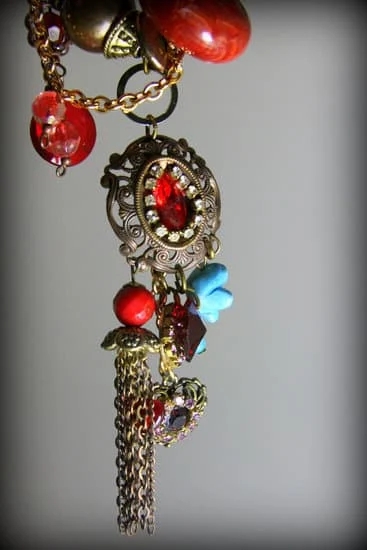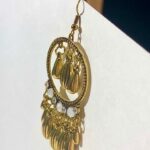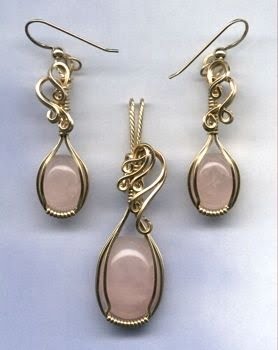Diamond jewelry is renowned for its elegance, beauty, and timeless appeal. But have you ever wondered how much it’s really worth? Understanding the value of diamond jewelry is crucial whether you’re buying or selling. In this article, we will explore the key factors that determine the worth of diamond jewelry and debunk common misconceptions surrounding its value.
Knowing the worth of your diamond jewelry is essential for a variety of reasons. Firstly, it allows you to make informed decisions when purchasing or selling such precious items. Whether you’re looking to invest in a new piece or sell an old one, understanding its value can help you negotiate better deals and avoid being taken advantage of.
However, there are often misconceptions about the value of diamonds that need to be addressed. Many people believe that size alone determines a diamond’s worth when, in fact, there are several factors to consider.
The four C’s – cut, color, clarity, and carat weight – play pivotal roles in determining a diamond’s value. By delving into these factors and examining their impact on worth, we can gain a clearer understanding of what sets certain pieces apart from others in terms of price and value.
In the following sections of this article, we will delve into each key factor individually: cut, color, clarity, and carat weight. By doing so, we will unravel the complexities behind evaluating the true worth of diamond jewelry. So let’s dive into the world of diamonds and uncover how much they are truly valued at.
Key Factors that Determine the Worth of Diamond Jewelry
When determining the worth of diamond jewelry, there are several key factors to consider. These factors play a crucial role in determining the value of a piece and can help both buyers and sellers make informed decisions. The four C’s of diamonds – cut, color, clarity, and carat weight – along with other considerations such as diamond shape, certification, and grading systems all contribute to the overall worth of diamond jewelry.
The first factor to consider is the cut of the diamond. The cut refers to how well a diamond has been shaped and faceted by a skilled craftsman. It directly affects how well a diamond reflects light and thus impacts its sparkle and brilliance.
A well-cut diamond will command a higher value compared to one that is poorly cut. The Gemological Institute of America (GIA) provides a 5-point scale for evaluating the cut quality of diamonds: Excellent, Very Good, Good, Fair, and Poor.
Next, the color and clarity of a diamond are important factors that affect its worth. Diamonds come in varying shades ranging from colorless to light yellow or brown. The GIA grades diamonds on a scale from D (colorless) to Z (light yellow or brown).
The closer a diamond is to being colorless, the more valuable it is. Clarity refers to the presence or absence of internal inclusions or external blemishes on a diamond. Diamonds with higher clarity grades have fewer imperfections and are therefore considered more valuable.
Carat weight is another significant factor when determining the worth of diamond jewelry. Carat is a unit used to measure the weight of diamonds. As carat weight increases, so does the rarity and value of the diamond. However, it’s important to note that carat weight alone does not determine worth; it must be balanced with other factors such as cut, color, and clarity.
| Factors | Impact on Worth |
|---|---|
| Cut | A well-cut diamond commands a higher value compared to a poorly cut one. |
| Color | Diamonds closer to being colorless are more valuable. |
| Clarity | Diamonds with higher clarity grades are considered more valuable. |
| Carat Weight | Rarer and heavier diamonds have a higher value. |
Understanding these key factors that determine the worth of diamond jewelry is essential for both buyers and sellers. By considering these elements, individuals can make informed decisions when it comes to purchasing or selling diamond jewelry. Additionally, seeking a professional appraisal will provide an accurate assessment of the value of a piece based on these factors.
Evaluating the Cut of Diamond Jewelry
The cut of a diamond is one of the most important factors in determining its value. It refers to how well the diamond has been cut and shaped by a skilled craftsman, as well as the proportions and angles of the facets. The cut can greatly affect how light is reflected and refracted within the stone, which directly impacts its brilliance and overall beauty.
Different diamond cuts have varying levels of popularity and value. For example, round brilliant diamonds are known for their exceptional sparkle and fire, making them highly sought after and valuable. Other popular cuts include princess, cushion, oval, emerald, and pear-shaped diamonds. Each cut has its own unique characteristics that can influence its worth.
To evaluate the cut quality of diamond jewelry, professionals use a diamond grading scale developed by recognized gemological institutions such as the Gemological Institute of America (GIA) or American Gem Society (AGS). This scale assesses various aspects of the diamond’s cut including brightness, fire, scintillation (sparkle), polish, and symmetry. These factors are evaluated on a spectrum ranging from poor to excellent.
Ensuring that you choose a diamond with an excellent or very good cut not only enhances the beauty of your jewelry piece but also helps maximize its value. A poorly cut diamond may lack brilliance and appear duller in comparison. Therefore, when assessing the worth of your diamond jewelry or considering purchasing one, it is crucial to pay attention to the cut quality.
| Aspect | Grading Scale |
|---|---|
| Brightness | Poor – Excellent |
| Fire | Poor – Excellent |
| Scintillation | Poor – Excellent |
| Polish | Poor – Excellent |
| Symmetry | Poor – Excellent |
By taking the time to understand the importance of cut and familiarize yourself with the diamond grading scale, you can confidently evaluate the worth of diamond jewelry. Remember that a well-cut diamond not only adds value but also enhances the overall beauty and desirability of your precious piece.
Examining the Color and Clarity of Diamond Jewelry
When determining the worth of diamond jewelry, two important factors to consider are the color and clarity of the diamonds. These aspects play a significant role in determining the overall value of a piece.
How color grading affects the worth of diamonds
The color of a diamond is graded on a scale from D (colorless) to Z (light yellow or brown). The less color a diamond has, the more valuable it is considered to be. Colorless diamonds are extremely rare and highly sought after, making them more valuable in the market. As you move down the color scale towards Z, the tint becomes more visible and can significantly affect the worth of the diamond jewelry.
Understanding diamond clarity grades and their impact on value
Clarity refers to the presence of internal flaws or external blemishes within a diamond. These imperfections are known as inclusions and can affect how light passes through the stone, impacting its brilliance and value. Diamond clarity is graded on a scale from Flawless (no inclusions or blemishes visible under 10x magnification) to Included (inclusions easily visible to the naked eye). The fewer inclusions a diamond has, the higher its clarity grade, and subsequently, its value.
The significance of flawless diamonds
Flawless diamonds are exceedingly rare, making them incredibly valuable. These diamonds have no internal or external imperfections visible under 10x magnification, ensuring maximum brilliance and fire. Due to their rarity and exceptional quality, flawless diamonds command premium prices in both retail and resale markets. When examining diamond jewelry for worth, flawless stones often increase its overall value significantly.
Weighing the Carat of Diamond Jewelry
The carat weight of a diamond is one of the key factors that determine the worth of diamond jewelry. Carat weight refers to the size or mass of the diamond, with one carat being equivalent to 200 milligrams. It is important to understand the relationship between carat weight and worth when evaluating diamond jewelry.
Different carat sizes can have a significant impact on the value of diamond jewelry. Generally, as carat weight increases, so does the price since larger diamonds are more rare and desirable. However, it is not a linear relationship. For example, a two-carat diamond may be priced significantly higher than two one-carat diamonds combined because larger diamonds are more valuable in terms of rarity and demand.
When considering the carat weight of diamond jewelry, it is essential to balance it with the other factors that determine worth. The four C’s (cut, color, clarity, and carat weight) all play a role in determining value. A larger diamond with poor cut quality or lower color and clarity grades may not be as valuable as a smaller diamond with superior qualities in these areas.
To accurately assess the carat weight of diamond jewelry, it is recommended to seek professional certification and grading from reputable gemological laboratories such as GIA (Gemological Institute of America) or AGS (American Gem Society). These organizations provide unbiased evaluations based on industry standards. A certificate from such labs not only verifies the authenticity but also provides detailed information about the specific characteristics of the diamond including its carat weight.
Assessing the Overall Quality of Diamond Jewelry
When determining the worth of diamond jewelry, it is crucial to assess its overall quality. This involves considering all four factors together: cut, color, clarity, and carat weight. Each of these factors plays a significant role in determining the value of a diamond piece.
One way to evaluate the overall quality of diamond jewelry is to look at the combination of the four C’s. The cut refers to how well a diamond has been shaped and faceted. A well-cut diamond will reflect light perfectly, enhancing its sparkle and brilliance. On the other hand, a poorly cut diamond will lose light, resulting in a dull appearance. Therefore, the cut quality directly impacts the value of the jewelry piece.
In addition to evaluating the cut, it is important to consider the color and clarity of diamond jewelry. The color grading scale ranges from D (colorless) to Z (light yellow or brown). Transparent diamonds with minimal traces of color are considered more valuable than those with visible tints.
Similarly, considering the clarity grades is vital as it determines the presence of any internal flaws or blemishes known as inclusions or external ones called surface imperfections. The fewer inclusions or blemishes present in a diamond, the higher its clarity grade and value.
Lastly, weighing carat weight along with other factors helps determine the overall quality and worth of diamond jewelry. Carat weight refers to how much a diamond weighs. As a general rule, larger diamonds tend to have higher values due to their rarity; however, this does not mean that smaller diamonds cannot possess significant worth if they excel in other areas such as cut or color.
By assessing all four factors together – cut, color, clarity, and carat weight – one can determine the overall quality and subsequently establish an accurate worth for their diamond jewelry piece. It is recommended to seek professional appraisal services for an objective evaluation that takes into account these critical factors, ensuring an accurate assessment of the value. Understanding the overall quality is essential when buying or selling diamond jewelry to ensure fair pricing and informed decision-making.
Estimating the Retail and Resale Value
When it comes to diamond jewelry, understanding its worth goes beyond just the value of the materials used. The retail price of diamond jewelry is influenced by various factors such as brand reputation, markups, and market demand. Similarly, the resale value of diamond jewelry can be affected by depreciation and market conditions. In this section, we will explore these factors and discuss how to estimate both the retail and resale value of diamond jewelry.
Factors influencing retail prices of diamond jewelry
The retail price of a piece of diamond jewelry is determined by several key factors. One significant factor is brand reputation and prestige. High-end luxury brands often command higher prices due to their established brand image and perceived value. Additionally, retailer markups play a role in determining the retail price. Various costs associated with running a physical store or an online platform are factored into the markup, including rent, utilities, advertising, and employee wages.
Furthermore, market demand can greatly influence the retail price of diamond jewelry. If a particular style or design becomes highly sought after or is featured prominently in popular culture, it can drive up the price due to increased demand. On the contrary, if there is low demand for certain designs or styles, retailers may offer discounts or promotions to entice customers.
Understanding the resale market and depreciation of diamond jewelry
When considering selling your diamond jewelry in the future, it’s important to understand that its value may not appreciate over time. Unlike some other investments that can increase in value over time, most diamonds tend to depreciate once they leave the showroom floor due to various factors.
One primary reason for depreciation in value is that when selling a piece of diamond jewelry on the secondary market, you have to account for potential profit margins for buyers who will later resell them themselves. This means you likely won’t receive what you initially paid for it. Additionally, changes in fashion trends and evolving consumer preferences can impact the resale value of certain styles or designs.
How to calculate the potential resale value of diamond pieces
To estimate the potential resale value of your diamond jewelry, there are several factors to consider. Firstly, you need to be aware of any market trends or shifts that could affect the desirability and demand for your specific piece. Keep in mind that rarity is often a driving factor in determining value, so unique colored diamonds or distinct shapes may hold their worth better than more common counterparts.
It’s also important to consider the condition of the jewelry piece. Regular maintenance and upkeep, such as cleaning and repairs if needed, can help maintain its appeal and overall value. Lastly, seeking professional advice from a certified gemologist or reputable jeweler can provide you with a more accurate assessment of the potential resale value based on current market conditions.
Additional Factors to Consider When Determining Worth
When determining the worth of diamond jewelry, it is important to consider additional factors that go beyond the traditional four C’s of diamonds. While cut, color, clarity, and carat weight are crucial in assessing the value of a diamond piece, there are other elements that can significantly impact its worth.
One factor to consider is the rarity and demand for specific diamond colors or shapes. Certain colors of diamonds, such as pink or blue, are extremely rare and highly sought after, making them more valuable than traditional white diamonds. Similarly, unique diamond shapes like heart or pear can also add value due to their distinctive nature. Understanding the market trends and preferences for these rare colors or shapes can help determine the worth of diamond jewelry.
Another factor to take into account is customization and craftsmanship. Diamond jewelry pieces that are custom-made or designed by renowned jewelers may have a higher worth compared to mass-produced pieces. The level of craftsmanship and attention to detail can greatly influence the overall value of a jewelry piece. Buyers often appreciate personalized designs, intricate settings, and fine detailing, which can contribute to a higher appraisal value.
Lastly, historical and sentimental value should also be considered when determining the worth of diamond jewelry. Pieces with a rich history or significant sentimental meaning may hold more value for buyers. Vintage or antique diamond jewelry may have an additional appeal due to their uniqueness and rarity. Sentimental attachment to a piece can also increase its worth for individuals who seek emotional connections with their purchases.
Conclusion
In conclusion, understanding the worth of your diamond jewelry is crucial when buying or selling these precious pieces. As discussed throughout this article, there are several key factors that determine the value of diamond jewelry. The four C’s – cut, color, clarity, and carat weight – play a significant role in assessing the worth of a diamond piece. Evaluating the overall quality of the jewelry based on these factors is essential for accurate value determination.
It is important to note that the worth of diamond jewelry is not solely based on its intrinsic qualities. Other factors such as rarity and demand for specific colors or shapes, customization and craftsmanship, as well as historical and sentimental value can all contribute to its overall worth. Therefore, when determining the value of your diamond jewelry, it is crucial to take into consideration all aspects to obtain an accurate appraisal.
To ensure an accurate assessment of your diamond jewelry’s worth, seeking a professional appraisal is highly recommended. An expert appraiser will have extensive knowledge and experience in evaluating diamonds and can provide you with an unbiased estimation of its retail and resale value. This expertise can be invaluable when making informed decisions about buying or selling your diamond jewelry.
Frequently Asked Questions
How do I know how much my diamond jewelry is worth?
The value of your diamond jewelry can be determined through a professional diamond appraisal. Diamond appraisals are conducted by certified gemologists who assess various factors including the diamond’s color, clarity, cut, and carat weight. They also consider market trends and the overall condition of the piece.
It is essential to seek an appraisal from a reputable appraiser who is knowledgeable in diamonds and follows industry standards. This evaluation will provide you with an accurate estimate of how much your diamond jewelry is worth.
How much can you sell diamond jewelry for?
The selling price of diamond jewelry can vary depending on several factors such as the quality of the diamonds, the brand or designer, current market demand, and where you choose to sell it. To maximize your chances of getting a fair price, it is advisable to sell through reputable channels such as established jewelers or auction houses that specialize in diamonds.
Online platforms can also be a viable option, but ensure they have solid reputations and offer secure transactions. Consider obtaining multiple quotes before making a decision so that you can compare offers and make an informed choice.
What is a 1 carat diamond worth?
The worth of a 1 carat diamond can fluctuate based on its specific characteristics and market conditions at any given time. Generally speaking, 1 carat diamonds are popular and sought after because they are often considered a benchmark size for engagement rings and other fine jewelry pieces.
However, it’s important to remember that other factors such as color, clarity, cut quality, and overall craftsmanship also play crucial roles in determining its value alongside carat weight alone. Working with an experienced gemologist or jeweler who evaluates the unique features of your specific diamond will provide you with a more accurate assessment of its worth based on these comprehensive criteria.

Welcome to my jewelry blog! My name is Sarah and I am the owner of this blog.
I love making jewelry and sharing my creations with others.
So whether you’re someone who loves wearing jewelry yourself or simply enjoys learning about it, be sure to check out my blog for insightful posts on everything related to this exciting topic!





